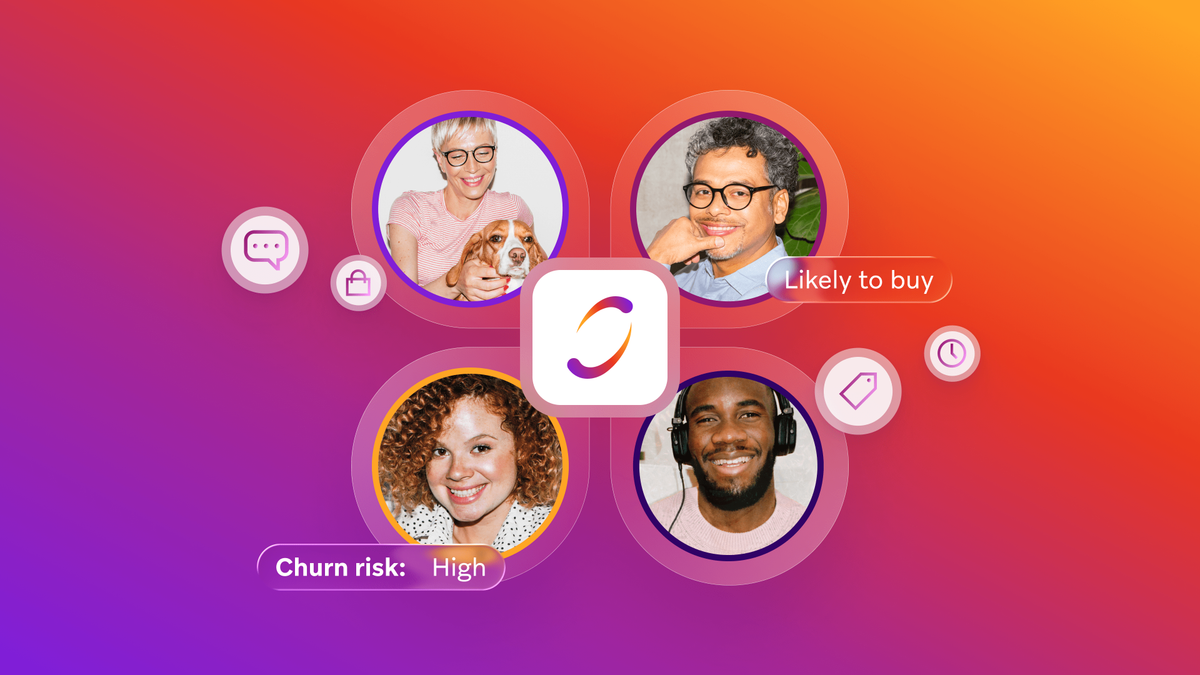Do You Have a Cross-Device View of Your Customers?
Published on March 13, 2017/Last edited on March 13, 2017/6 min read


Team Braze
For years now, the smartphone has reigned supreme as marketers’ most sought-after consumer device. While smartphones are still key components in an effective mobile strategy, we’re learning more and more that while consumers love their phones, they want to connect through a variety of devices.
We’re now seeing a rise in alternate devices that may warrant integration into your omni device approach. Smart TVs and set-top boxes have helped liberate people from cable boxes and now smart speaker sets have become the home assistants for millions—and that’s just a start. As customers gain the ability to reach your brand through a number of devices, it becomes increasingly important to track their engagement and target your approach to build consistent brand experiences across devices.
Which devices are key right now?
The ever-expanding landscape of digital devices presents new opportunities to interact with individual consumers on multiple devices throughout the day. That said, it can be difficult to navigate these devices and determine which are right for your customers and worth the time and investment. We’ve compiled a list of devices below—some old standbys, and some that have more recently gained attention in the market—that we think are key to developing cross-device relationships with your consumers.
- Smartphones: Smartphones are still the most ubiquitous device and for many users, often serve as the “hub” of their digital interactions, since it goes with them everywhere. Around this time last year, comScore research found that there are 198.5 million smartphone users in the U.S., which they estimate to represent 79% mobile market penetration (and we can only imagine it’s increased since then).
- Tablets: While tablet usage is starting to show some decline, we think they still hold an important place in your marketing strategy. By 2015, nearly half of Americans owned a tablet. Plus, there’s no substitute for a tablet’s large portable screen for experiences like reading on-the-go, streaming video, or other activities that have a major visual component.
- Laptops and desktops: Computers may be less trendy than some devices on this list, but they are still mainstays of productivity. Even while other devices grow in popularity, computer ownership is remaining stable, with 73% of U.S. adults owning a desktop or laptop.
- Wearables: eMarketer estimates there are 74.8 million wearable users in 2017 but also found that some owners have stopped using their devicesdue to limited functionality or the lack of built in connectivity, like 4G. If you target wearables, think through how they fit into your larger outreach strategy. For example, the small screens may not be optimal for all apps, but the accessibility is great for urgent notifications for things like time-sensitive reminders or promotions.
- Smart TVs and set-top boxes: Plug in systems, like Roku, Chromecast, or Apple TV help make a regular TV a smart TV and give more access to TV-based apps. These have become chill-out central for media apps, allowing for long sessions at home on the couch. Variety reports that 65% of all U.S. TV households have either a streaming device connected to their TV, or smart TV—that’s more than the number of homes with cable boxes.
- Home assistants: These devices, like Amazon’s Echo and Google Home have been around for a while, though they only recently gained major traction and popularity. Amazon’s home assistant made a big splash over the holidays, selling nine times more echoes than last year. The useful and clever voice activation systems are quickly becoming fixtures in many homes, and have the potential to become the de facto operating system of the Internet of Things (IoT).
So, how can these fit together into a single user experience? Imagine a music streaming app, which could potentially reach users through any of these devices. On a single day, a user could listen on a phone during their commute, on a computer at work, with a smartwatch during a workout, and on a connected TV or through a home assistant in the evening. This kind of usage would indicate a power-user who loves the app, but if all that usage history is all stored in different systems, you may never identify this user or realize just how much they’re engaging.

The Internet of Things (IoT)
Smart TVs and home assistants are part of a larger movement to connect devices and sensors through the internet known as the Internet of Things. Under IoT, an increasing number of everyday objects both in and out of the home are able to exchange data with each other through network connections—for instance, allowing your connected vehicle to signal to your smart stove that is should start preheating because you’re almost home (and ready to start cooking).
While a lot of IoT marketing strategies have focused on smart home devices, IoT can extend beyond the home, encompassing connected cars, and smart devices in retail and other settings. And as the number of IoT devices grows, it’ll be even more important for marketers to ensure that they’re linking together data received from all the different devices and platforms that their customers used to engage with them, in order to get an accurate, actionable view of their audience’s actual behaviors and preferences.
It all comes back to the user profile
Ultimately, the best way to get a cross-device view of your users is by having all device information flow back to your marketing platform’s user profiles in real time. By centralizing User profiles that capture demographics, interests, preferences, behaviors, and engagement from all devices gives marketers more actionable data for personalization, tracking user journeys, and building comprehensive customer experiences.
Learning about device traffic can also help you develop more targeted messaging. Since not all of these devices allow you to interact with users in the same way, your marketing platform can help you make use of messaging channels on phones or computers to encourage usage on TVs or home assistants, for instance. It can also help you prioritize during a time-crunched campaign, allowing your outreach to focus on the most effective or high-traffic messaging devices.
Planning for an omni device world allows you to ultimately provide more consistent and valuable experiences for users. When you understand when and how customers use their different devices, you can do a better job of meeting them where they are, at the right time.
Integrating cross-device data into your marketing platform requires a strategic approach as well as an investment of time and money. If each device was rolled out at different times, it’s possible your incoming data may be siloed in different systems, making it difficult to centralize and act on that data. Even if you do get all that data flowing into your marketing platform’s user profiles, it’s important to keep looking forward, to ensure that the system you’re using can handle devices that are only now being imagined.
Your marketing platform is your best friend when it comes to managing omni device data, but only if it’s setup to handle all those entry points. Prioritizing cross-device user profiles will help you build powerful relationships with customers and keep you primed to integrate all the important devices yet to come.
Releated Content
View the Blog
2025 Braze year in review: Major moments, milestones, and evolutions

Team Braze

AI customer segmentation: Smarter targeting through predictive insights

Team Braze

SMS vs. MMS vs. RCS: Choosing the right messaging channel for modern engagement
